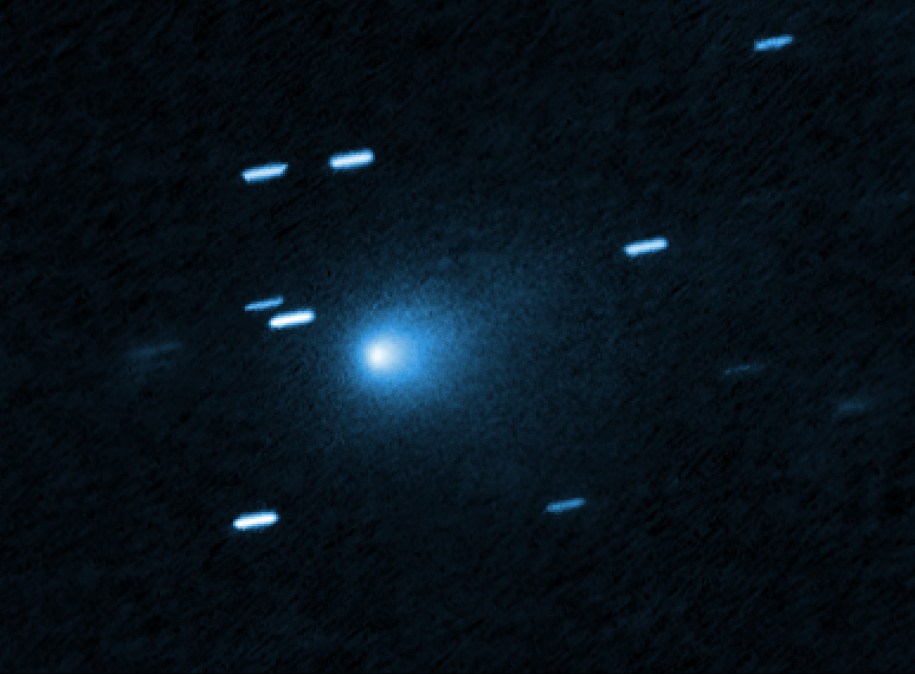US government grapples with questions about interstellar object 3I/ATLAS amid shutdown

Notwithstanding major disruptions from the U.S. government shutdown, federal personnel are monitoring the rare interstellar comet known as 3I/ATLAS as it moves through the solar system, multiple officials told DefenseScoop on Tuesday.
They also confirmed that NASA experts are set to connect with at least one congressional lawmaker about the mysterious object on Wednesday, following her official request for more imagery to be released.
Questions have been swirling about the nature and origin of 3I/ATLAS and its bizarre trajectory since the Asteroid Terrestrial-impact Last Alert System (ATLAS) telescope in Chile first spotted it in July. The comet’s name stems from its status as one of three interstellar objects (3/I) ever discovered in humans’ local universe, as well as that NASA-funded telescope that identified it.
3I/ATLAS is massive in size and traveled at the highest speed ever recorded for such an object. Intrigued by its unusual composition and several unique features, astronomers across the world have been studying the comet since its initial observation.
In the aftermath of the discovery, Harvard University professor and astronomer Avi Loeb said there was a chance that an interstellar object with such perplexing aspects could be an alien probe. Other theories — including that it could be sending signals or messages from another world — subsequently went viral online in recent months.
NASA and the European Space Agency both rejected those claims and continue to maintain that it’s a natural, albeit uncommon, comet.
Loeb, who recently briefed Congress members on topics associated with unidentified anomalous phenomena (UAP) and national security, has been calling for the public dissemination of the latest data and imagery captured on 3I/ATLAS, which NASA has not supplied since the federal government closed on Oct. 1.
Echoing his concerns, Rep. Anna Paulina Luna, R-Fla., penned a letter to NASA’s Acting Administrator Sean Duffy on Oct. 31 to urge the immediate release of specific records, images and data about 3I/ATLAS for wider analysis.
“This information is of great importance to advancing our understanding of interstellar visitors and their interaction with our solar system,” Luna wrote.
On Tuesday, a spokesperson on her team told DefenseScoop that officials representing NASA and the Pentagon have not briefed House lawmakers on the comet to date — but that Luna reached out to the space agency “in assistance with a scientist at Harvard” and now has a call scheduled for Wednesday.
“We’re interested in seeing the imagery and I’m sure this will be one of many objects to observe as tech has advanced, and we will see more in the near future,” Luna’s spokesperson said.
A government source familiar with the plans, who was granted anonymity to speak on the matter, separately confirmed that NASA officials are tracking the interstellar comet and expect to discuss 3I/ATLAS with Luna and her team during a meeting on Wednesday.
The source also indicated that NASA intends to release relevant findings, data and observations once the U.S. government reopens.
After Congress mandated its creation in the fiscal 2022 National Defense Authorization Act, Pentagon leadership formally set up the All-domain Anomaly Resolution Office (AARO) to investigate airborne, transmedium and submerged objects and devices that are not immediately identifiable, but could impact the U.S. and its military. Formerly dubbed UFOs, they are referred to in the modern era as UAP.
Responding to a query about whether this third interstellar comet was or is considered a national security threat, and if the Defense Department is assisting NASA’s activities, a Pentagon official told DefenseScoop on Tuesday: “AARO enjoys strong partnerships with the scientific community and is following reports relating to 3I/ATLAS closely. However, 3I/ATLAS falls outside of AARO’s mission as the object is assessed to be a comet and therefore is not considered [UAP].”
“We refer you to NASA for more information about 3I/ATLAS,” the Pentagon official said.
DefenseScoop received an automated email from NASA saying that the organization was closed due to a lapse in government funding and that mailboxes were not being monitored.
“Regarding the potential implications of 3I/ATLAS, I regard it as a potential black swan event. The object is most likely a natural comet, but its anomalies imply that we must consider a technological origin because of the large implications to humanity in that case,” Harvard’s Loeb said on Tuesday. “In the coming weeks, we will be able to learn much more about its nature.”
He noted that the International Asteroid Warning Network, a world-wide planetary defense partnership of organizations, announced a dedicated campaign to collect data on 3I/ATLAS between Nov. 27 and Jan. 27.
The interstellar comet moved past its closest point of approach to the Sun in its orbit on Oct. 29, according to Loeb, who said early data suggests that it brightened dramatically and also exhibited what could be a non-gravitational acceleration.
“The interpretation of these features will become easier in the coming weeks as it gets out of the direction of the Sun in our sky and we can observe it in detail,” Loeb told DefenseScoop.



